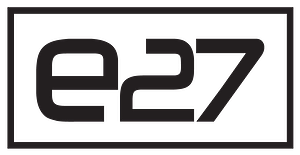Open Data
Quick Definition
Information that anyone can freely access, use, and share without restrictions.
What is Open Data?
Open data refers to data that is freely available for anyone to access, use, modify, and share without legal, financial, or technical restrictions. It is typically released by governments, organizations, or research institutions to promote transparency, innovation, and collaboration.
How Open Data Works
Open data is usually published in standardized, machine-readable formats (e.g., CSV, JSON, XML) with clear licensing terms that allow unrestricted reuse. It is hosted on public repositories or open data portals, making it easily discoverable. APIs and metadata often accompany open data sets to improve accessibility and integration into applications, research, and analytics.
Benefits and Drawbacks of Using Open Data
Benefits:
-
Transparency and accountability: Encourages trust in government and institutions.
-
Innovation: Fuels new products, services, and research.
-
Cost efficiency: Reduces duplication of data collection efforts.
-
Collaboration: Enables cross-sector partnerships and knowledge sharing.
Drawbacks:
-
Quality and accuracy: Data may be outdated or incomplete.
-
Privacy concerns: Sensitive data might require anonymization.
-
Data fragmentation: Lack of standardization can make integration difficult.
-
Maintenance challenges: Open data sets may not always be updated regularly.
Use Case Applications for Open Data
-
Government transparency: Open budgets, election results, and public spending data.
-
Healthcare: Epidemiology research, disease tracking, and hospital performance.
-
Smart cities: Urban planning, traffic optimization, and environmental monitoring.
-
Business intelligence: Market research, trend analysis, and competitor insights.
-
Academic research: Leveraging public datasets for studies and innovation.
Best Practices for Using Open Data
-
Verify data sources: Ensure credibility and reliability before use.
-
Respect licensing terms: Even open data may have attribution requirements.
-
Combine with other datasets: Enhance insights by integrating multiple sources.
-
Ensure data privacy: Avoid misuse of personal or sensitive information.
-
Document usage: Keep track of data provenance and any transformations applied.
Recap
Open data is freely accessible, reusable information that promotes transparency, innovation, and collaboration across industries. While it offers vast opportunities for creating value, users must navigate challenges like data quality, privacy, and standardization to maximize its potential.
Related Terms
On Premise
Software or services that are hosted and managed within an organization's own infrastructure, typically on the company's own servers or data centers, rather than being hosted externally by a third-party provider.
Online Analytical Processing (OLAP)
A technology that allows users to quickly analyze and manipulate large amounts of data from multiple perspectives for business intelligence purposes.
Open Robotics
A free toolbox and set of instructions that anyone can use to build and test robots, so people and companies don’t have to start from scratch.



